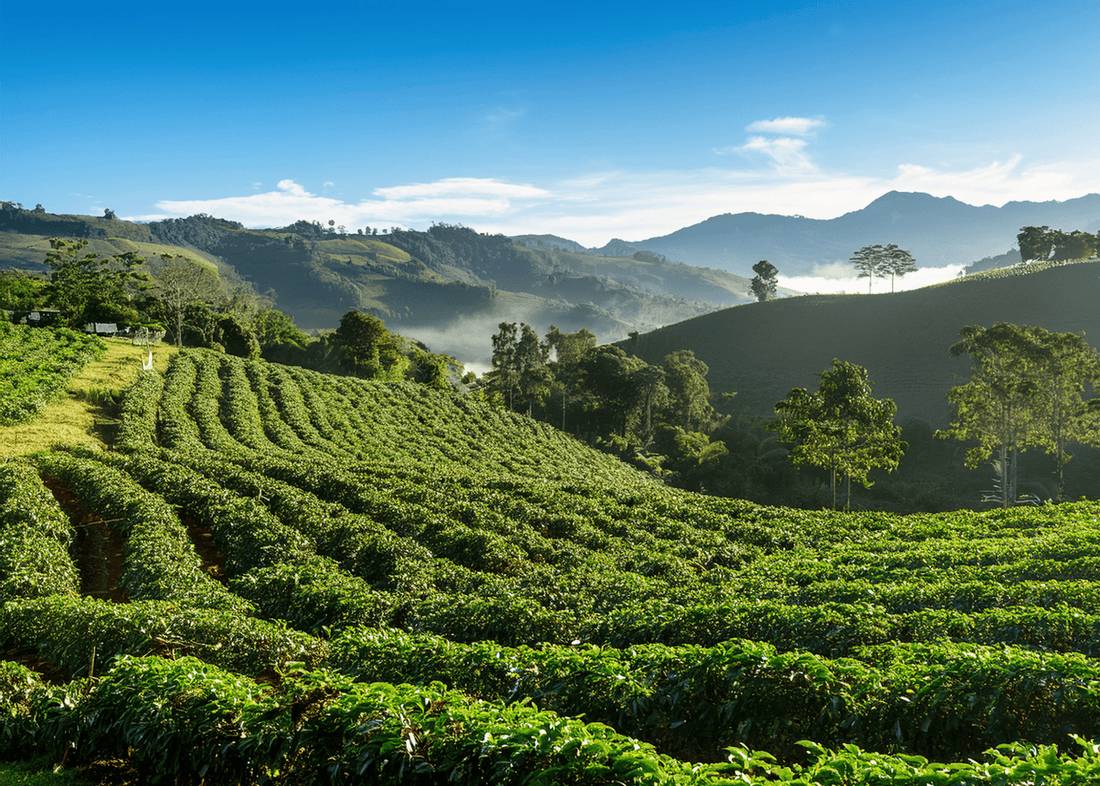
How Altitude Shapes Coffee Flavor
Share
When you savor a great coffee, you might notice flavors like chocolate, fruit, or floral notes. But did you know that altitude — the height at which coffee grows — is one of the biggest reasons behind those flavors? Let’s break down how altitude influences coffee and why it matters for the beans we source at Jones Ranch Coffee.
Why Altitude Matters in Coffee
Coffee is a fruit. Like wine grapes, the conditions where it grows deeply affect how it tastes. Altitude impacts:
- Bean density
- Sugar development
- Acidity
- Flavor complexity
Higher elevations often lead to slower-growing coffee plants. That slower growth lets sugars develop more fully, creating more complex, nuanced flavors.
What Happens to Coffee at Different Altitudes?
Here’s a breakdown of how altitude changes the cup you brew:
| Altitude | Typical Flavor Profile |
|---|---|
| Below 2,000 ft | Mild, simple, often flatter taste |
| 2,000–3,000 ft | Balanced, sometimes nutty or sweet |
| 3,000–4,500 ft | Fruity, medium acidity, smoother body |
| 4,500–6,000 ft and above | Bright acidity, floral, complex, layered flavors |

Note: These are general ranges. The exact flavor also depends on the coffee varietal and processing method.
Altitude and Bean Density
At higher altitudes:
- Beans are denser because they develop slower.
- Denser beans roast better, unlocking unique flavors.
That’s why roasters (including us) often prefer Strictly High Grown (SHG) or Strictly Hard Bean (SHB) coffees — terms indicating beans grown at higher altitudes.
Altitude’s Role in Central & South American Coffee
The regions we work with — El Salvador, Guatemala, Honduras, Peru, Ecuador — produce coffees from mid to high altitudes. Here’s how those elevations influence flavors:
- El Salvador (4,000–5,500 ft): Chocolate-forward, nutty, smooth acidity
- Guatemala (4,000–6,000 ft): Bold, fruity, sometimes wine-like acidity
- Honduras (3,500–5,500 ft): Balanced, sweet, floral or citrus notes
- Peru (4,000–6,000 ft): Clean, bright, often floral with fruity highlights
- Ecuador (3,000–5,500 ft): Sweet, medium body, sometimes stone fruit
At Jones Ranch Coffee, we select farms specifically based on these elevation profiles. We also avoid very low-altitude coffees — they don’t meet the flavor complexity we promise.
Why Single-Origin Coffees and Altitude Go Hand-in-Hand

Single-origin coffee means the beans come from one region, not a blend.
Altitude consistency is one reason why single-origin coffees can deliver such pure, unique flavors.
Blends often mix beans from different altitudes (and countries), which can dilute distinct tasting notes.
By sticking to single-origin, high-elevation coffees, we keep the natural characteristics intact — whether it’s the nutty chocolate of Saludos or the fruit-forward brightness coming in our new Tinto line.
Does Higher Always Mean Better?
Not necessarily.
While high-altitude coffees often win flavor competitions, the varietal, processing method, and farm quality also matter.
A poorly managed farm at 6,000 feet won’t produce great coffee just because of elevation. That’s why at Jones Ranch Coffee, altitude is just one factor. We also look for:
- Exceptional farming practices
- Harvest quality
- Ethical sourcing (no co-ops, direct trade preferred)
- Seasonal consistency
Brewing Tip: How to Highlight Altitude Flavors at Home
To truly taste the effects of altitude:
- Grind size: Slightly finer grinds bring out brightness and acidity.
- Water temperature: 195°F to 205°F — avoid boiling.
- Brewing method: Pour-over or AeroPress works well for highlighting clarity and complexity.
Final Thoughts
Altitude isn’t just a number on a farm’s profile. It’s one of the key reasons why coffee from Central and South America stands out in the world market. At Jones Ranch Coffee, we choose high-altitude farms not because it’s trendy — but because it consistently delivers the bold, complex flavors our customers expect.
